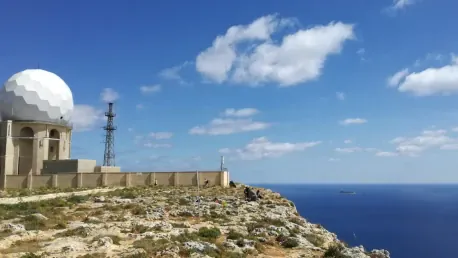In a world where rapid response to emergencies can mean the difference between life and death, the latest research conducted by the Department of Energy’s Oak Ridge National Laboratory (ORNL) offers a glimpse into how revolutionizing the use of existing Doppler radar networks might significantly enhance emergency response capabilities. Typically known for their role in weather forecasting, Doppler radars have been invaluable in providing real-time information about precipitation and severe weather conditions such as rain, sleet, and storms. However, ORNL researchers are now exploring uncharted territories by utilizing data that is typically filtered out, such as information about smoke, ash, or debris, detected by these radars. This innovative approach involves filtering out precipitation data, coded as spheres with a value of one, to focus on elongated items that represent debris. The application of this method to significant non-weather events demonstrated significant findings, indicating promising new uses for Doppler radar data beyond traditional weather monitoring.
Harnessing Unfiltered Doppler Data
ORNL’s research team retrospectively applied their method to notable non-weather incidents, including the BP oil rig explosion in the Gulf of Mexico, the SpaceX Starship explosion in Texas, and the Oklahoma City bombing. By tracking debris clouds in these events, researchers illustrated Doppler radar’s potential in emergency scenarios. This tracking yielded vital real-time data that could substantially support emergency responders. For example, the radar could help identify the movement of debris clouds, highlighting safe zones for emergency operations, and enabling authorities to respond swiftly to new emergencies, especially in remote or rural areas.
One critical insight from this investigation is the role machine learning algorithms could play in further optimizing radar data usage. Michael Benson from ORNL emphasized that machine learning could automatically detect debris clouds, provide real-time notifications, and hence significantly improve response times. This automatic detection and notification system could be a game-changer, particularly in unmonitored rural regions where early detection of such events is critical to ensuring efficient and effective emergency responses.
Applications in Nuclear Forensics
Another significant potential application highlighted by this research is in the field of nuclear forensics. The team led by David Hooper at ORNL identified that Doppler radar data could be instrumental in detecting and tracking nuclear fallout plumes. This capability would provide field technicians with real-time, safer, and more accurate information for sample collection, dramatically improving the safety and efficacy of their missions. The real-time tracking enabled by these radars could also refine predictive models used to assess the impacts of nuclear fallout, thereby enhancing mission planning and reducing the dependency on exclusively predictive models.
The possible benefits in nuclear forensics underscore the broader trend of repurposing tools and technologies for wide-ranging applications beyond their original designs. Meteorological tools such as Doppler radars traditionally serve the purpose of weather monitoring, but as this research shows, their potential extends far beyond. The ability to track and predict the movement of debris or fallout can revolutionize national security protocols and emergency preparedness strategies. This innovative usage represents just a fraction of what could be achieved when existing data networks are leveraged in new, cross-disciplinary collaborations.
Transforming Public Safety
The implications of these findings are vast, highlighting how non-weather data from Doppler radar networks can significantly transform public safety and emergency response systems. The development of algorithms for real-time debris detection and tracking, coupled with enhanced predictive models, can enable emergency responders to act more swiftly and safely in various non-meteorological events. This integration of Doppler radar data into emergency response systems can lead to marked improvements in public safety, as responders gain access to precise, real-time information that can guide their decisions.
Moreover, repurposing Doppler radar data for emergency response underscores the importance of innovation in existing technologies. By looking beyond conventional uses and exploring new applications, significant advancements can be made in enhancing national security and public safety. This research from ORNL serves as a testament to the untapped potential lying within existing technology networks. As technological advancements continue, it is crucial to remain open to the myriad possibilities that can emerge from interdisciplinary and cross-sector collaborations, ultimately pushing the boundaries of what can be achieved in emergency response and public safety.
Future Considerations
In a world where rapid responses to emergencies can determine life or death, the Department of Energy’s Oak Ridge National Laboratory (ORNL) has conducted groundbreaking research on how existing Doppler radar networks can significantly boost emergency response capabilities. Traditionally used in weather forecasting, Doppler radars provide real-time data on precipitation and severe weather like rain, sleet, and storms. Yet, ORNL researchers are now venturing into new areas by utilizing usually discarded data, such as information about smoke, ash, or debris detected by these radars. Their innovative approach involves filtering out conventional precipitation data, marked by spheres with a value of one, to concentrate on elongated signals representing debris. Applying this method to major non-weather events showed remarkable findings, indicating potential new uses for Doppler radar data beyond weather forecasting. This advancement could revolutionize how we respond to emergencies, opening new possibilities for saving lives and enhancing public safety.









